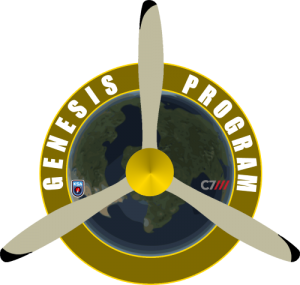 The C7 crash investigation team has released its final report for the incident that occurred on Jan 31st involving the Civvie Prototype model under the command of Captain Jebediah Kerman. Here is the initial report that was released earlier this month:
The C7 crash investigation team has released its final report for the incident that occurred on Jan 31st involving the Civvie Prototype model under the command of Captain Jebediah Kerman. Here is the initial report that was released earlier this month:
The event took place around mid-day after second sunrise, during the final approach to Runway 09. The approach was too low, causing the Civvie to impact with the ground short of the runway thanks to a rise in terrain just before reaching the flat plain surrounding the KSC property. Because it was already in a landing configuration, the sudden and unexpected impact was taken up on all three wheels at a speed of around 56m/s, well within tolerances. However this speed is too fast for a landing and so the Civvie bounced back into the air. Jeb’s attempts to hold the nose up resulted in a stall, which dropped the Civvie like a rock from as high as 5m to land on just its main gear, which pitched it forward so its prop dug into the ground. The remaining momentum flipped the aircraft over onto its back, with torque from the propeller rotating it over 90 degrees to rest facing south. Investigators estimate the initial landing produced a force of 3.5Gs with the final crash producing a force upwards of 6Gs. These momentary moments of high stress had no detrimental effect on the pilot other than to whip his head forward into the dash, the second time producing a moderate wound.
After studying all the data captured by the Telemetry Data Unit and interviewing the pilot, controllers & engineering team as well as examining the aircraft itself, the investigation team has come to the conclusion that the crash was mainly caused by pilot error, however other factors like the lack of any approach guides, the inexperience of the pilot and poor guidance from Flight Control also contributed. Investigators suspect one reason Jeb was so low on his approach was due to flying the Runway 27 approach on his last flight, which comes in over water with a much shallower glide slope. Controllers knew he was coming in low but did not send him any warning as he had told them he had a visual on the runway, so they assumed he could also see the terrain around him. However the high nose-up pitch of the Civvie in landing configuration that close to touchdown in fact prevented Jeb from being able to see the rise in terrain directly in front of him. Upon hitting the ground, the impact was too surprising for Jeb to fully comprehend what had just happened, and with the Civvie already in a nose-up position the stall was inevitable, although it may have been recoverable had Jeb thought to apply full thrust instead of simply continuing to hold back on the stick. While he also lacked the presence of mind to deploy the landing assist parachute when the stall occurred, the team calculated that the chute would have barely had time to make it out of its casing before the second impact.
To help prevent further issues in approaching Runway 09, the team has worked with Flight Director Lanalye to impose new protocols on when the flight controllers should communicate warnings to the pilots. They have also designed a set of guides to be placed out in the hills along either side of the approach corridor that should remain in sight of the pilots until the aircraft has passed them. So long as the pilot has visual on both of these guide markers they will avoid the last ridge on final approach to the runway. We expect to have the guides installed by the end of next week so we can resume operations into Runway 09.







